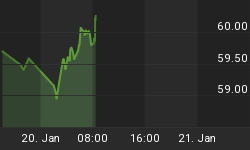The correlation between the S&P 500 and the euro has been running extremely high in recent months. Therefore, if the euro can mount a sustained charge higher, stocks could do the same.
As we mentioned on December 9, the 22-week moving average is a good way to get a 30,000 ft view of many markets. When the slope of the 22-week is positive, a market tends to be healthy. When the slope of the 22-week is negative, further weakness may be in the cards.
When examining the 22-week moving averages for the U.S. Dollar Index and the euro, we see a "lesser of the two evils" advantage in the dollar's favor. Based on what we know today, over the longer-term the odds favor (a) higher highs in the dollar, (b) lower lows in the euro, (c) and renewed weakness in stock prices.

It is common for markets to correct back to their 22-week, which means the dollar could weaken in the short-term, while keeping the longer-term trend intact. Similarly, the euro could experience a countertrend rally back to its 200-week, which would also allow for stocks to push higher for a time. If the euro can recapture its 22-week and the slope of the 22-week turns positive, it would be a good sign for both the euro and stocks. Until that happens, we will remain cautious with stocks and commodities.
Another way to monitor the "risk-off" vs. "risk-on" tone of the markets is to monitor the strength of the U.S. dollar relative to the Australian dollar. As the world's reserve currency, the U.S. dollar tends to attract capital during periods of fear and/or uncertainty about the future. The Australian economy relies heavily on commodities. When investors feel confident about future economic outcomes, they become more attracted to economically-sensitive commodities, such as copper. When commodities are performing well, the Australian economy tends to perform well with capital being attracted to the Australian dollar.
On the chart below, when the slope of the 22-week is negative (orange arrow), the "risk off" trade is in favor longer-term. When the slope of the 22-week turns positive (green arrows), the "risk on" trade tends to impact markets over the longer-term. Given the current state of affairs, the "risk off" trade still carries an edge, looking out several weeks, relative to the "risk on" trade. Countertrend rallies are to be expected, which means stocks could still make another push higher as we noted last week.
















